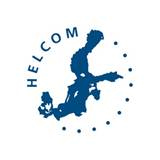
Report released on methods for spotting alien species in Baltic ports
15 July 2014
HELCOM has today released a report on alien species transported via ships’ ballast water that threaten the sensitive Baltic ecosystem and may also have negative impacts to the economy and human health. The report is the final outcome of HELCOM ALIENS 3 project (2012–2013) which further tested and proposed improvements to the joint HELCOM-OSPAR sampling protocol, specifying methods and means for spotting marine alien species in ports. The project has also updated the related online port survey database and risk assessment tool, shared with the North-East Atlantic marine environment protection commission OSPAR, which went live last week.
Both the sampling protocol and the online tool were adopted by the coastal countries of the Baltic Sea in 2013, as part of the joint harmonised procedure on granting exemptions for ballast water treatment provisions of the International Convention for the Control and Management of Ship’s Ballast Water and Sediments (BWM Convention) of the International Maritime Organisation (IMO) in the combined HELCOM and OSPAR marine area.
Under certain low risk conditions, the BWM Convention Regulation A-4 enables a party to grant exemptions to any requirements to apply ballast water management for ships (regulation B-3) or additional measures (regulation C-1). Whether or not a specific case can be defined as falling under such low risk conditions requires a risk assessment.
The joint harmonised procedure was agreed within HELCOM by the Baltic Sea coastal states and the EU in 2013, and simultaneously also by the OSPAR Contracting Parties. It was a further development of the regional Baltic Sea guidance on such risk assessments for A-4 exemptions, agreed within HELCOM in 2010.These documents were seen as necessary in order to ensure an efficient and harmonised implementation of the BWM convention in the Baltic Sea.
This final report of the project coordinated by the HELCOM Secretariat presents the results of practical trials carried out in the ports of Gothenburg (SWE), Kokkola (FIN), Hamina/Kotka (FIN) and Sköldvik (FIN). Further, the report estimates the work load of the agreed port sampling procedure; describes the work carried out on the joint online decision support tool as well as other activities of the project.


